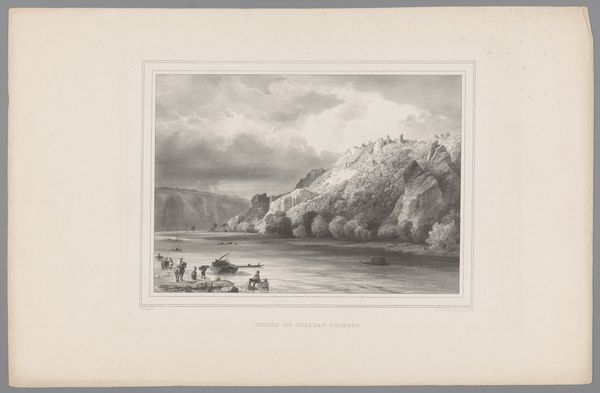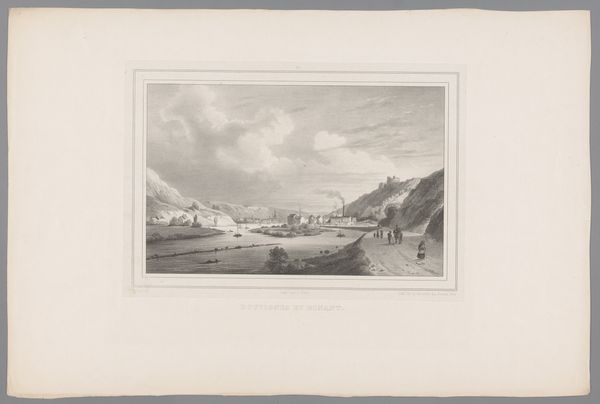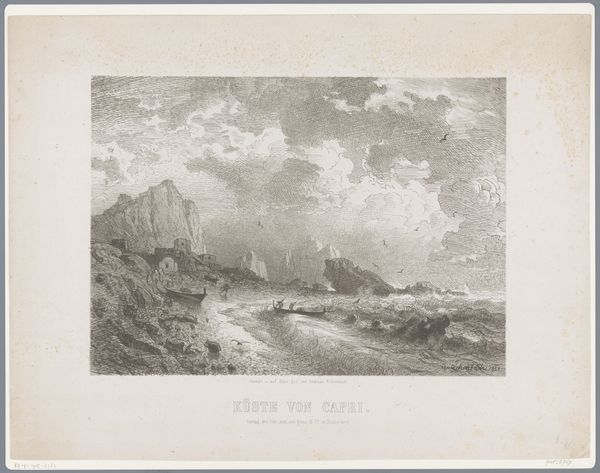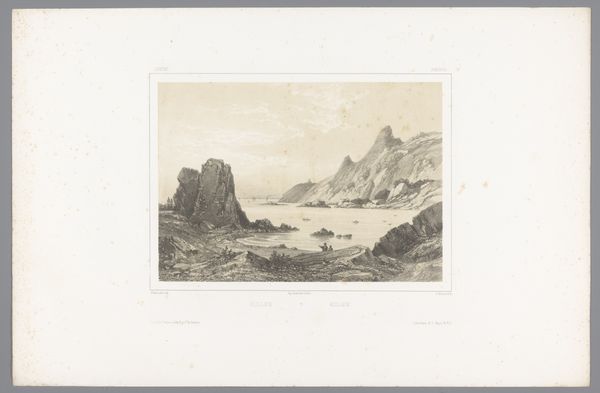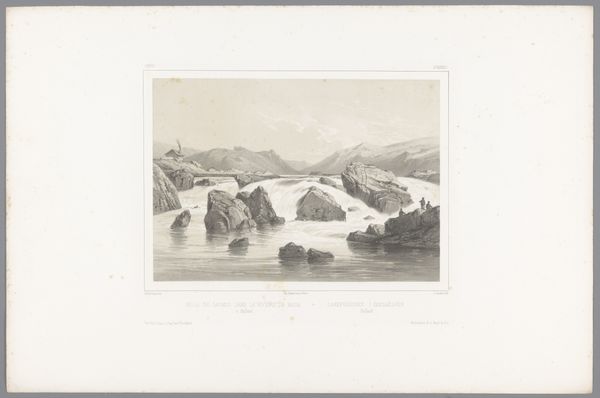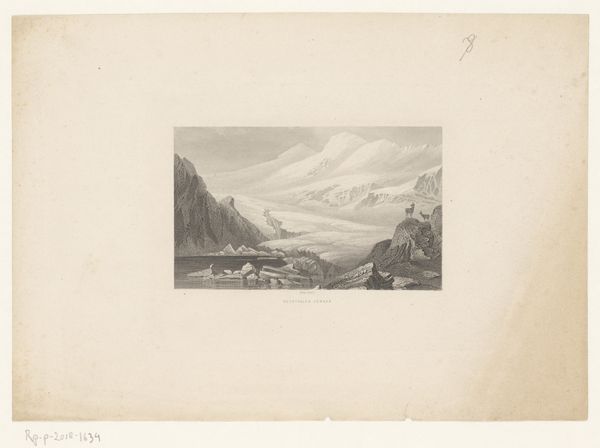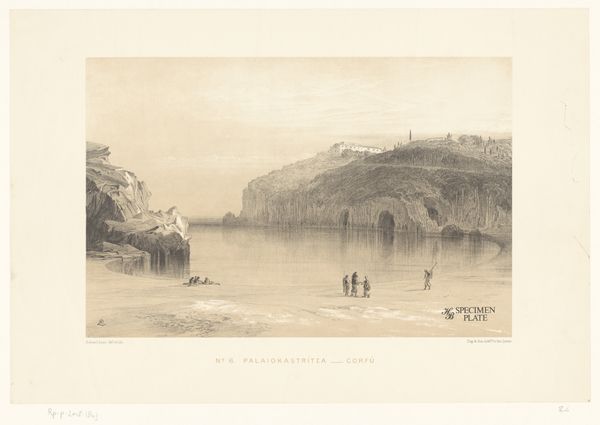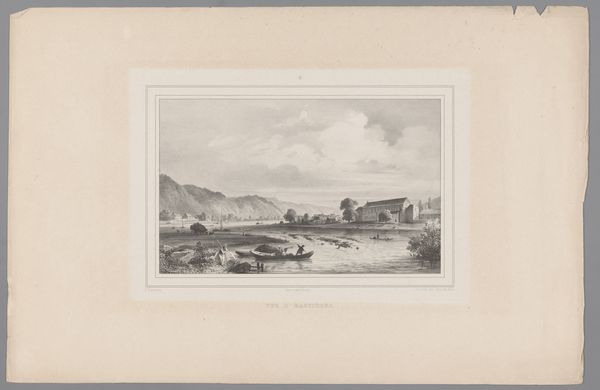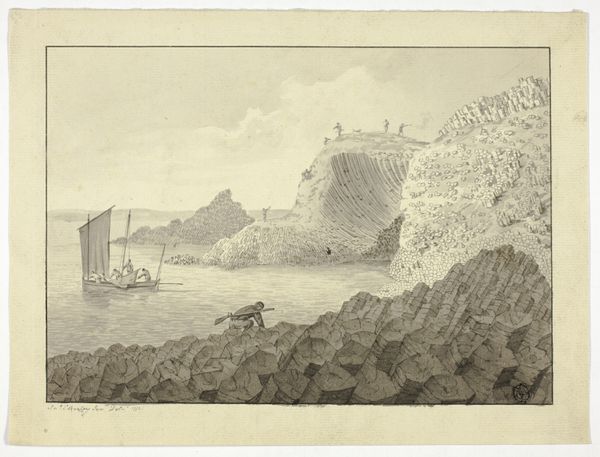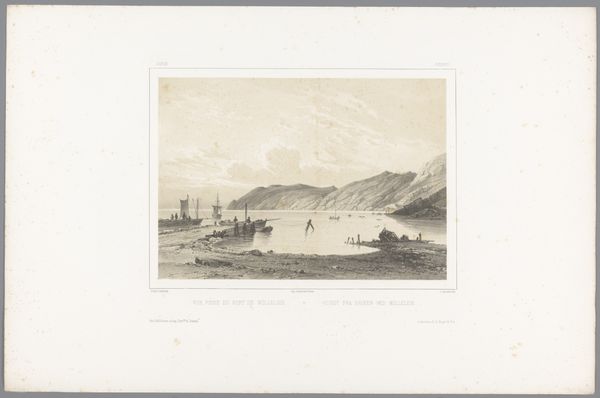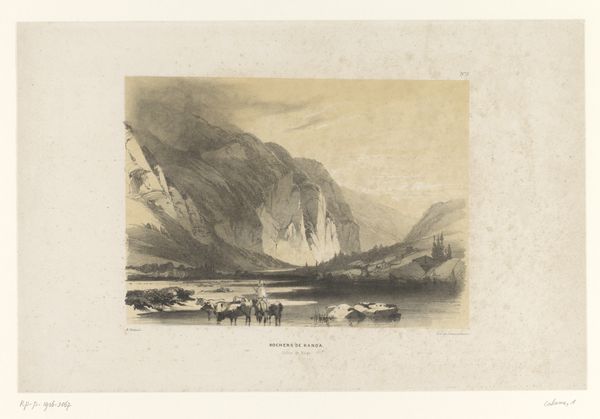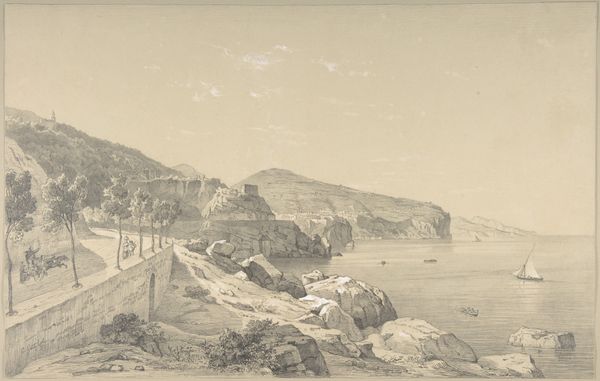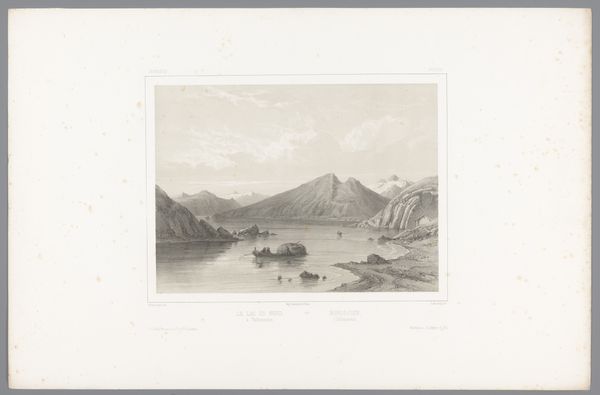
print, engraving
# print
#
landscape
#
romanticism
#
engraving
Dimensions: height 360 mm, width 460 mm
Copyright: Rijks Museum: Open Domain
Paulus Lauters created this print of Freÿr Castle, likely in Belgium, during the 19th century, using lithography. The image encapsulates the Romantic era's fascination with picturesque landscapes and historical sites. It also offers a glimpse into the social and economic structures of the time. The castle, centrally positioned, signifies power and heritage. Lauters likely intended to evoke a sense of national pride. The presence of working figures and boats suggests a harmonious relationship between nature and human activity, an important tenet of emerging industrial society. The artwork reflects a desire to preserve and celebrate the past, set against a backdrop of rapid modernization. To fully grasp its meaning, we need to research the socio-political climate of 19th-century Belgium. What was the role of art institutions in shaping national identity? How did economic changes impact artistic production? These are the questions art historians seek to answer, using diverse resources such as historical archives and exhibition records, to illuminate the rich context in which art is created.
Comments
No comments
Be the first to comment and join the conversation on the ultimate creative platform.
